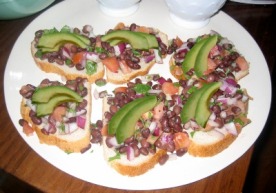 Avg. rating 5 from 2 votes.
Avg. rating 5 from 2 votes.Recipe Information
Ingredients
Directions
In a bowl combine flour, salt, and oil. Add 1/4 cup of water and combine. Add more water in small amounts until dough becomes stiff and elastic. It will be very hard to knead. End by kneading and turning dough in on itself so you stretch it out. Wrap in plastic and refrigerate at least an hour.
Cut into quarters and pass one quarter through the pasta machine at the widest setting, flouring the dough liberally. If the dough gets a series of little cavities along part of the length you need to flour it more. Keeping the machine at its widest setting fold the dough and run it through again, with each pass through the machine flour as needed. Do this a few more times until the dough feels silky to the touch.
Tighten the pasta machine one notch and run the pasta through two times at this setting. You will want to flour liberally with each pass.
Keep tightening and flouring, passing through twice at each thickness. My machine has seven settings but for most uses, 3 or 4 is thin enough. Too thin and the pasta dissolves on cooking, too thick and it’s unbearably chewy.
See below for directions on shaping your pasta. Once shaped, let it dry for a while. The amount of time needed will vary greatly depending how dry/wet the day is. You will not achieve a dryness like boxed pasta but you don’t want them to stick to each other, plus you need them dry enough so they don’t fall apart when cooked, and you don’t want to be eating raw flour.
When boiling remember that this pasta will probably take 3 minutes to cook at the absolute maximum.
Shaping the pasta:
Tagliatelle: If you are making tagliatelle (wide noodles) run it through the tagliatelle (wide noodle) attachment if you have it. If you don’t you can flour liberally and roll/fold the pasta lengthwise and slice with a knife.
Tortellini: If you want to make “ravioli” or what my grandmother called tortellini, lay the pasta sheet out flat, place filling on the pasta a teaspoon at a time along the length of the pasta. I do not recommend using a disher (scoop) as it produces too rounded a shape, and even the smallest disher I’ve seen would have too much filling for all but the largest filled pasta. Remember to pre-cook your filling because later on when boiling the pasta it will be in the water only long enough to warm through. Using a pasta cutter (makes a zig zag edge) or pizza cutter (straight edge) or a knife to cut the pasta. Remember you need to leave a border (1/2″) around three sides of the filling AND you need an equal size of empty pasta to use as the top. Once cut, dip a finger in water and moisten the edge to seal and fold the top over the filling. Press out air and press the edges together.
Torta: This was my grandmother’s specialty. Take the pasta down to the thinnest setting–you will be able to read a newspaper through the pasta. Make a spinach filling to taste (she did spinach, salt and pepper, Parmesan and olive oil, sometimes adding Swiss chard as well. Her advice was not to be stingy on the cheese!). Line a baking pan with the pasta sheets, but don’t cut the long ends, just let them lie on the sides. Fill with the spinach filling so it is about 1/2-3/4″ thick. Fold the pasta over the top and use additional bits to make sure the spinach is completely covered. Coat the top with olive oil. Bake at 350 °F until the top is golden brown. Cut into squares and serve. Serve warm or at room temperature.
Notes
Substitutions






















